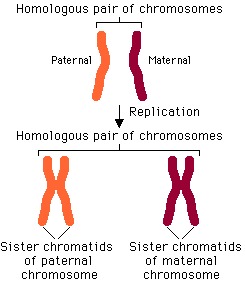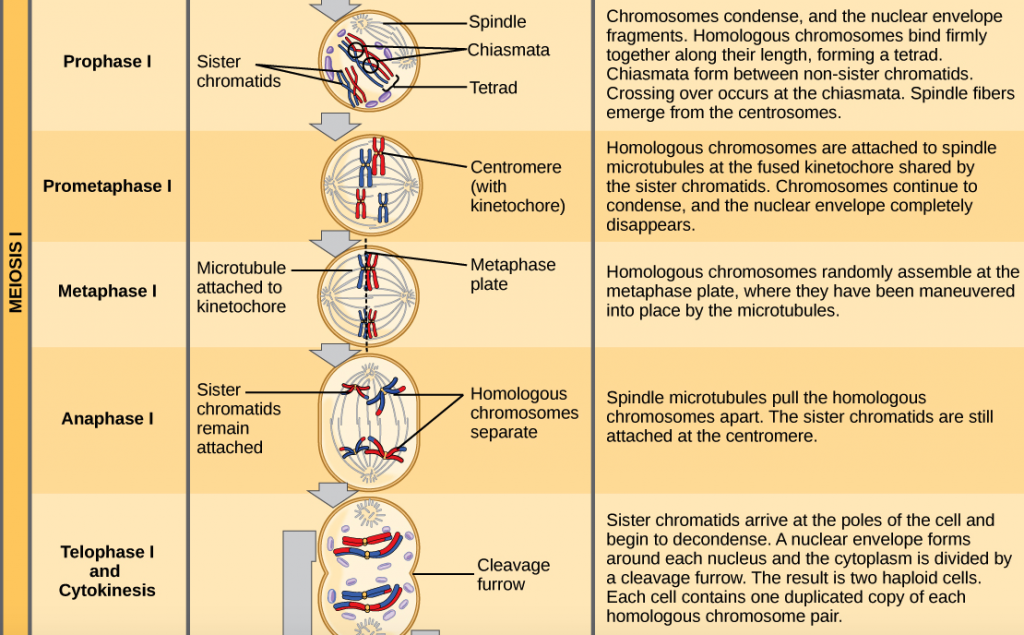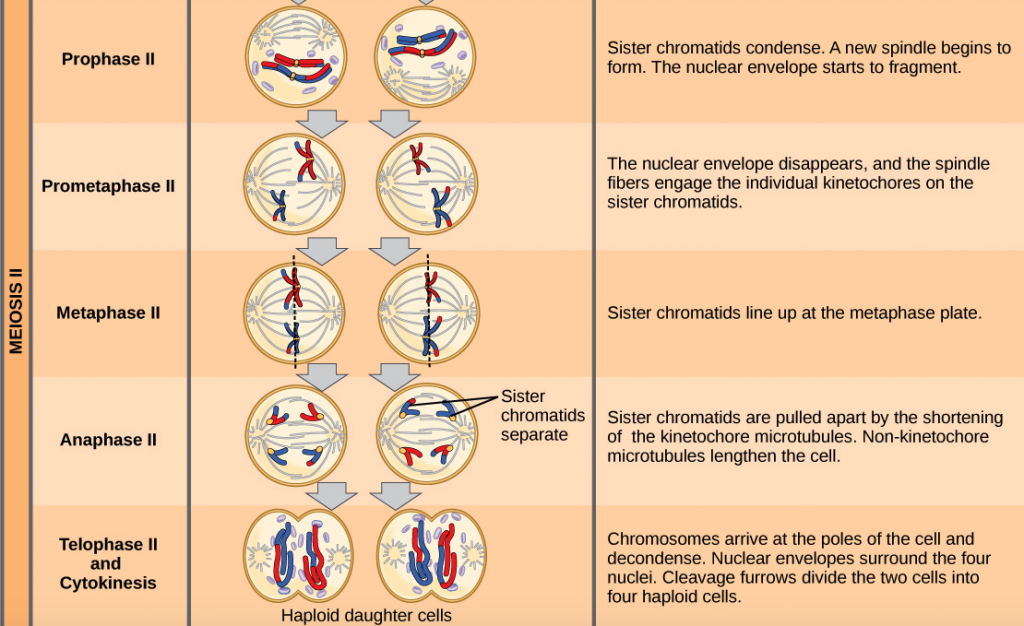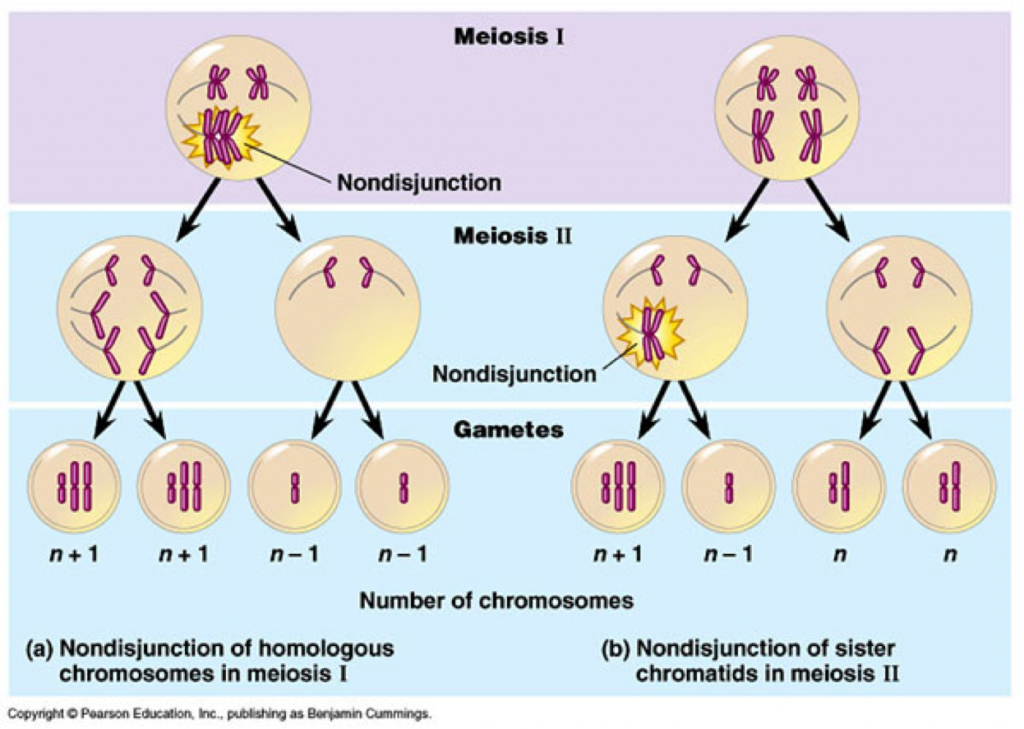Keywords:
Haploid – A cell with one set on each chromosome (in Humans – 23). Sperm and Eggs.
Diploid – A cell with two sets of each chromosome (In Humans 23 chromosomes, 2 of each = 46 total). All cells except from sex cells are diploid!
Gametes – Cells involved in sexual reproduction. Four are produced from meiosis. Ex. Sperm and Eggs.
Gonads – Primary sex organs. Where meiosis occurs to produce gametes.
Homologous Chromosomes – Chromosomes that carry the same genes (DNA that codes for a trait). We get one from the mother and one from the father.

Stages of meiosis:
Crete a table showing each of the stages of meiosis 1 and 2. Use the link below, gather information about the stages of both meiosis 1 and 2. Draw each stage – be sure to include adequate detail as presented to you be the resources.
- http://bit.ly/1dOJ5JN – Click on step-through to navigate meiosis.
- (http://www.sumanasinc.com/webcontent/animations/content/meiosis.html)


Additional resource:
http://www.johnkyrk.com/meiosis.html
Characteristics unique to meiosis:
- Crossing over: During prophase I, there is an exchange of genetic material.
- Pairing of homologous chromosomes: Homologous chromosomes synapse (pair up) to form bivalents.
- NON-SISTER CHROMATIDS break at the same point, twist around each other and exchange a segment of their chromosome with each other.
- Since genes are at the same location, but DNA may differ between maternal and paternal chromosomes, a new combo of alleles may be present when the chromosomes separate

3. Random Orientation – During metaphase I, homologous pairs line up along the centre of the cell. The way they line up is random (either maternal or paternal chromosome can orient to either pole).
- This increases genetic variation in gametes – In humans, 2^23 (8,388,608) possible outcomes.

Summer School July 10th Homework
Answer the six questions below to the best of your ability. Due Thursday, July 11th
- State the function of meiosis. [1]
- How do meiosis and mitosis differ? [2]
- Explain why meiosis is described as a reduction division. [1]
- Outline the processes that occur during the first division of meiosis. [3]
- Explain how meiosis results in genetic variation in gametes. [2]
- Outline how sexual reproduction leads to even further genetic variation within a species. [2]
SUMMER SCHOOL – INFO BELOW IS NOT NECESSARY!
Extra or missing chromosomes
- Non-disjunction – errors in anaphase (I or II) in which a pair of homologous chromosomes fails to separate.
- Can lead to a gamete with an extra chromosome or missing one.
- Ex. Klinefelter Syndrome
- Males with an extra X chromosome (XXY)
- ~1:1000 males
Symptoms are often not obvious, however sterility is common.

Summer School July 10th Homework
Answer the six questions below to the best of your ability. Due Wednesday March 8th.
- State the function of meiosis. [1]
- State the definition of the term homologous chromosome. [1]
- Explain why meiosis is described as a reduction division. [1]
- Outline the processes that occur during the first division of meiosis. [6]
- Explain how meiosis results in genetic variation in gametes. [2]
- Outline how sexual reproduction leads to even further genetic variation within a species. [2]
Comments by shaun pletsch